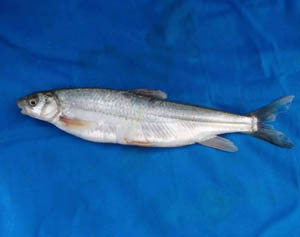
Bone Lip Yellow River Fish Latin scientific name Chuanchia Labiosa, foreign name Huanghe Naked Carp, no subtype.Bone lips Yellow river fish are mainly eaten with raw diatom and insects.Each egg produces about 2700 capsules with a mature female eggs with a length of about 200 mm in length, which is y...

Corporal Latin scientific name EpalzeorHynachos Bicornis & Nbsp; WU is a unique species in China.Corner fish is a small freshwater fish, which mainly inhabits the lower layer of the bottom of the rock. Scrape raw algae. The body is small, and the body length is generally 100-150 mm.In recent yea...

The scientific name of the Great White Shark is Carcharodon carcharias, and its foreign name is Great White Shark. There are no subspecies.The relationship between the Great White Shark and other genera in its family is controversial. Two systematic arrangements have been proposed. One holds that it...
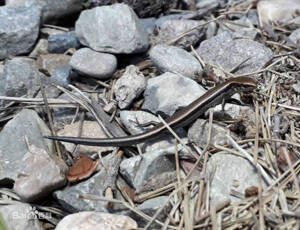
Huanren dwarfskink is called Huanren dwarfskink in foreign language, and has no subspecies.Huanren dwarfskink mainly feeds on mosquitoes, flies, spiders, earthworms, insect larvae and moths. Individuals in artificial breeding also eat mealworm larvae, but their preference for them is slightly lower....
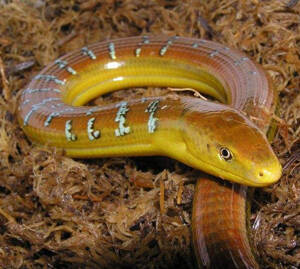
The English name of the brittle lizard is Hart's glass lizard, and there is no subspecies.In mid-to-late October, when the temperature drops to around 13℃, the brittle lizards gradually enter hibernation. When the temperature drops below 8℃, they enter deep sleep. Females and young lizards hib...
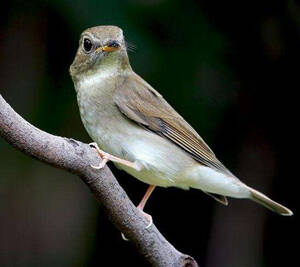
White-throated Jungle Flycatcer is also known as White-gorgetted Jungle Flycatcer. It is a bird of the family Flycatcher and genus Jungle Flycatcher. Male and female birds are the same color and there is no subspecies.The outer edge of the primary flight feathers of the White-throated Flycatcher is...
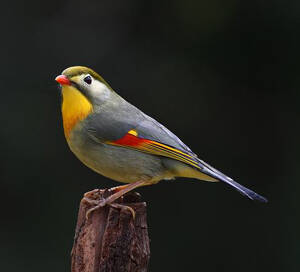
Red-billed Leiothrix has 5 subspecies. Red-billed Leiothrix is a resident bird. Except for the breeding period, it usually moves in pairs or alone. In other seasons, it usually moves in small groups of 3-5 or more than 10, and sometimes it also moves in mixed groups with other small birds. It...
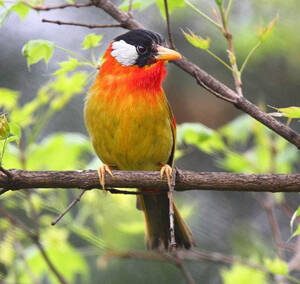
Silver-eared Mesia has 9 subspecies.Silver-eared Mesia often moves alone or in pairs, and sometimes in groups, especially in autumn and winter. It is lively and bold, not afraid of people, often jumping in the undergrowth or bamboo groves and in the open space in the forest. It rarely rests on trees...
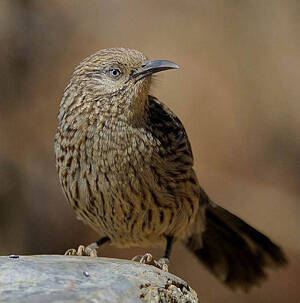
Giant Babax, also known as Giant Babax, has two subspecies.Except during the breeding season, Giant Babax often moves in small groups of 5 to 6. It is mainly terrestrial, mostly active on the ground or in low bushes, and sometimes enters the vicinity of human residences. It is lively and good at hid...

The foreign name of the long-tailed broadbill is Long-tailed Broadbill, and there are 5 subspecies.Long-tailed broadbill is often seen in groups of more than ten or even twenty or thirty, foraging; they mainly feed on insects and fruits. They usually live quietly on bushes or small trees in the shad...
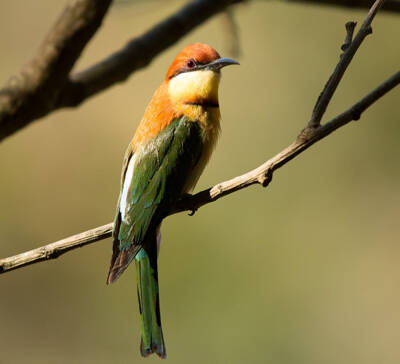
Chestnut-headed Bee-eater, also known as Chestnut-headed Bee-eater, has 3 subspecies.The chestnut-headed bee-eater migrates to southeastern China in summer, living in hills or woodlands. It mostly flies and hunts in the air, accompanied by a trilling call, and sometimes stands on the top branches of...

Blue-throated bee-eater, also known as Blue-throated bee-eater, has 2 subspecies.Blue-throated bee-eaters often move alone or in small groups, often flying in the sky to find food, and often resting on trees or wires.The migration time of the blue-throated bee-eater is from April to May in spring an...
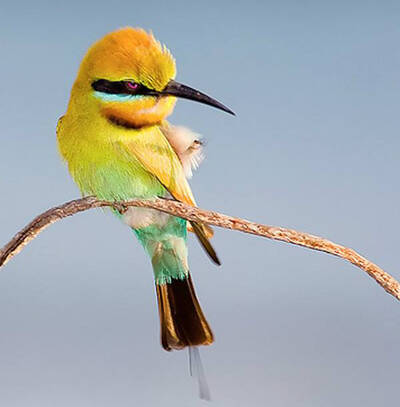
Rainbow Bee-eater, also known as Rainbow Bee-eater, is a medium-sized green bee-eater with no subspecies.Rainbow Bee-eater mainly preys on bees and wasps. Other prey include butterflies, moths, damselflies, dragonflies, beetles and most flying insects. They mostly forage in flight, quickly swooping...

There are only two species of beavers in the world. The other is the American beaver, which is distributed in Canada and Alaska, USA. Beavers are highly adapted to aquatic life and can move underwater for a long time. They have the habit of building dams with branches and trunks and nesting next to...
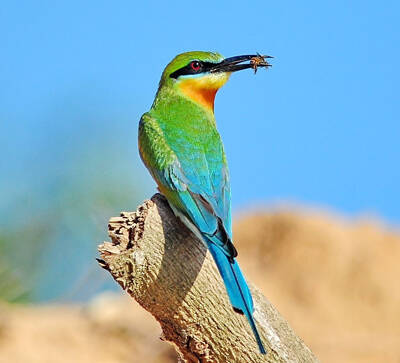
Blue-tailed Bee-eater, no subspecies.Blue-tailed Bee-eater is a resident bird in southwestern Yunnan and Hainan Island, China, and a summer migratory bird in other areas. It migrates in April-May and leaves in September-October.Chestnut-throated bee-eaters usually move in groups of several to dozens...
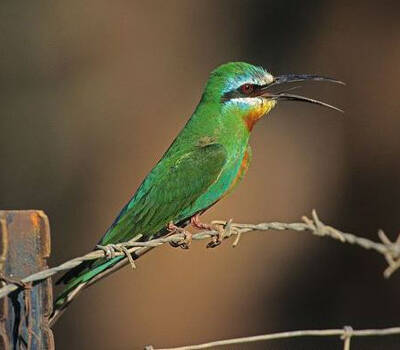
Blue-cheeked Bee-eater, also known as Blue-cheeked Bee-eater, has two subspecies.At dusk or after the rain, large groups of blue-cheeked bee-eaters will fly in the air to chase flying insects, especially when there are breeding termites flying around. The sound of the upper and lower jaws beating ca...
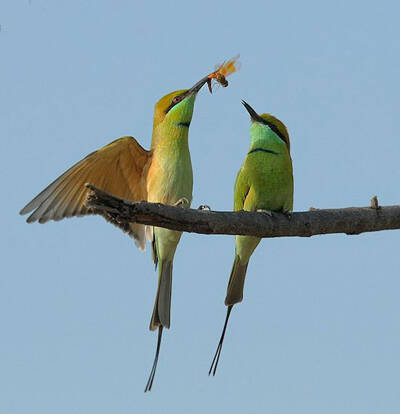
Green Bee-eater, also known as Green Bee-eater in English, is a small bird with 9 subspecies.The green-throated bee-eater is a resident bird that moves in small groups. It is often seen perching on flying insects and suddenly rushing into the air to bite them. After catching the flying insects, it w...
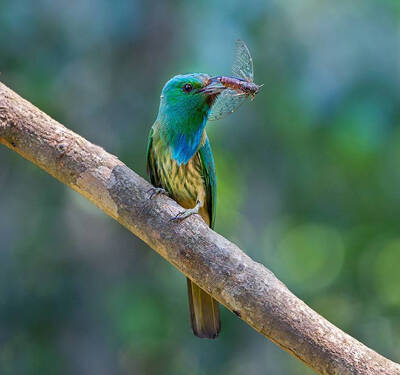
Blue-bearded Bee-eater is a green forest-dwelling bee-eater with two subspecies.Blue-bearded Bee-eaters live in pairs and seem to be inactive for most of the day. They live high up in the trees, in the shade of leaves, or in the sun near the canopy. They stand next to the inflorescences and will pec...

The Upland Buzzard is a large bird of prey with no subspecies.The Upland Buzzard is mainly a resident bird, and some are migratory. In spring, most of them arrive at the breeding grounds in late March or early April, and in autumn, most of them leave the breeding grounds in late October to mid-Novem...
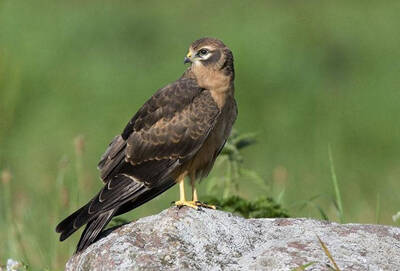
Montagu's Harrier is a bird with no subspecies.Montagu's Harrier is a bird that often moves alone or in pairs. Most of the time during the day, it is seen lazily and leisurely gliding in the air, or flapping its wings gently over grasslands and swamps. When resting, it often roosts on trees...